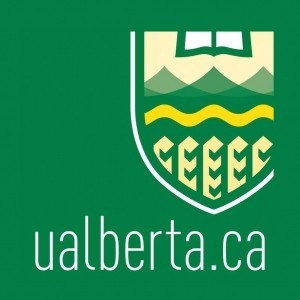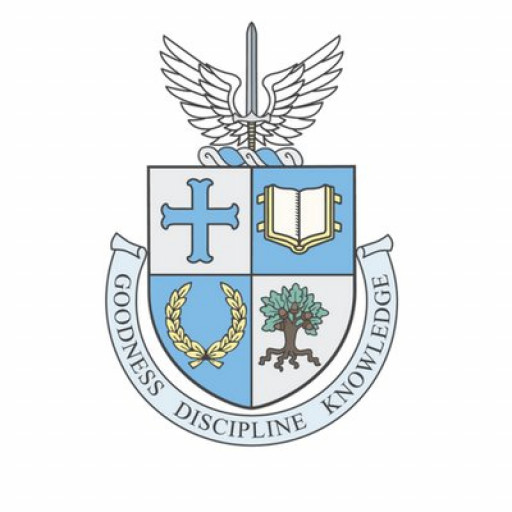Photos of university / #ualberta
The Earth and Atmospheric Sciences undergraduate program at the University of Alberta provides students with a comprehensive understanding of the Earth's processes, its atmosphere, and the interactions between these components. This program aims to equip students with a solid foundation in geology, meteorology, climate science, geophysics, and environmental studies, preparing them for careers in research, industry, government agencies, and education. Students will explore a wide range of topics, including the structure and dynamics of the Earth's interior, surface geology, oceanography, atmospheric phenomena, weather prediction, and climate change. The curriculum emphasizes practical skills such as fieldwork, laboratory analysis, data interpretation, and computer modeling, which are crucial for addressing real-world environmental challenges. Through a combination of lectures, seminars, hands-on lab sessions, and field trips, students will gain both theoretical knowledge and practical experience. The program also encourages interdisciplinary approaches, integrating physics, chemistry, biology, and mathematics to deepen understanding of complex Earth systems. Students have access to state-of-the-art facilities, including advanced laboratories, climate chambers, and geographic information systems (GIS) technology. The university fosters a research-oriented environment, offering ample opportunities for undergraduate research projects under the mentorship of experienced faculty members. Graduates of the program are well-prepared for careers in resource exploration, environmental consulting, disaster management, policy development, and academia. Additionally, the program provides a solid foundation for those seeking to pursue graduate studies in Earth sciences, atmospheric sciences, or related fields. The Earth and Atmospheric Sciences program at the University of Alberta is committed to developing skilled professionals capable of addressing pressing environmental issues and contributing to sustainable development worldwide.
The Earth and Atmospheric Sciences undergraduate program at the University of Alberta offers students a comprehensive education in the physical processes that shape our planet and its atmosphere. This program provides a strong foundation in geology, meteorology, oceanography, climatology, and environmental science, enabling students to understand the complex interactions between the Earth's surface, atmosphere, and biosphere. Students will explore topics such as mineral and rock formation, tectonic processes, weather patterns, climate change, and the impact of human activities on natural systems. Through a combination of theoretical coursework, laboratory experiments, fieldwork, and research projects, students gain practical skills in data analysis, geographic information systems (GIS), remote sensing, and scientific communication. The program emphasizes critical thinking, problem-solving, and responsible stewardship of Earth's resources. Graduates are well-prepared for careers in environmental consulting, natural resource management, meteorology, geological surveying, and further academic research. The curriculum includes opportunities for interdisciplinary collaboration and hands-on learning experiences that prepare students to address pressing environmental challenges. With access to state-of-the-art laboratories and research facilities, students are encouraged to engage in innovative projects that contribute to our understanding of Earth systems. The program also prepares students for professional certification and postgraduate studies, empowering them to make meaningful contributions to the fields of Earth and atmospheric sciences.
The Earth and Atmospheric Sciences undergraduate program at the University of Alberta typically requires completion of a minimum of 120 credits for the Bachelor of Science degree. Students are expected to fulfill the university’s core university introductory requirements, including courses in writing, quantitative reasoning, and the arts and humanities. The program offers specializations in areas such as Geology, Atmospheric Science, and Environmental and Conservation Sciences. Core courses include foundational classes in geology, mineralogy, petrology, and geophysics, along with atmospheric physics, climate science, and environmental management. Students must also complete a sequence of laboratory and field courses to gain practical skills. Electives allow students to explore interdisciplinary topics or focus on specific interests within earth sciences. A capstone project or thesis may be required in the final year to demonstrate research competency. Students are encouraged to participate in field trips and internships to enhance experiential learning. The program emphasizes the development of analytical, problem-solving, and communication skills necessary for careers in academia, industry, or government agencies. Completion of a minor in related disciplines, such as chemistry or environmental science, is encouraged but not mandatory. The program is designed to provide a comprehensive understanding of Earth's processes, resources, and hazards, preparing graduates for diverse professional opportunities.
The Earth and Atmospheric Sciences undergraduate program at the University of Alberta offers a comprehensive range of financing options to support students throughout their studies. Tuition fees vary depending on the program specialization and the student’s residency status; domestic students benefit from lower tuition rates compared to international students. For the 2023-2024 academic year, undergraduate tuition fees for Canadian residents are approximately CAD 5,000 to CAD 7,000 per year, while international students pay around CAD 20,000 to CAD 30,000 annually. These fees cover tuition, access to facilities, and participation in field trips and laboratory work essential for earth and atmospheric sciences coursework.
In addition to tuition, students should account for ancillary costs such as textbooks, supplies, and living expenses in Edmonton, which can range from CAD 10,000 to CAD 15,000 per year. The university provides multiple avenues for financial assistance, including scholarships, bursaries, and awards based on academic achievement, financial need, or specific criteria such as leadership and community involvement. The Earth Sciences Scholarship Fund, for instance, awards merit-based scholarships to outstanding students enrolling in or continuing the program.
Students can also explore government-funded financial aid programs, including Student Loans and grants available to Canadian residents. International students are encouraged to seek external funding sources, including scholarships offered by their home countries or international organizations. The university maintains partnerships with industry and government agencies that occasionally provide sponsorship opportunities and paid research assistant positions, which can help offset costs.
Part-time work opportunities are available on campus, allowing students to earn income without compromising their academic progress. Cooperative education (co-op) programs and internship options enable students to gain valuable work experience while earning supplementary income, often leading to better employment prospects after graduation. Overall, the Earth and Atmospheric Sciences program is supported by various financial resources designed to make education accessible and manageable for students from diverse backgrounds.
The Earth and Atmospheric Sciences program at the University of Alberta offers a comprehensive curriculum designed to provide students with a solid foundation in the scientific principles governing the Earth’s physical and atmospheric systems. This program encompasses a wide range of topics, including geology, meteorology, climatology, hydrology, and environmental sciences, preparing graduates for careers in research, environmental management, resource exploration, and consultancy services. The program emphasizes both theoretical understanding and practical skills through laboratory work, field studies, and computational modeling. Students have the opportunity to participate in research projects, internships, and cooperative education placements, enhancing their experiential learning and professional development. The faculty comprises experienced researchers and professionals dedicated to advancing knowledge in Earth and Atmospheric sciences, fostering an environment of innovation and inquiry. The program also offers specializations such as Geology, Climate Science, and Environmental and Water Resources, allowing students to tailor their education to their interests and career goals. State-of-the-art facilities, including laboratories equipped with modern analytical instruments and access to geographic information systems (GIS), support student learning and research activities. Graduates from the program are well-equipped to pursue advanced studies or obtain employment in various sectors, including government agencies, environmental consulting firms, resource companies, and educational institutions. The University of Alberta’s strong emphasis on interdisciplinary collaboration and sustainable practices reflects in the curriculum and research initiatives, preparing students to address complex environmental challenges facing society today. The program’s community engagement, opportunities for international research collaborations, and the university’s reputation for scientific excellence make it a premier choice for students interested in Earth and Atmospheric Sciences.



